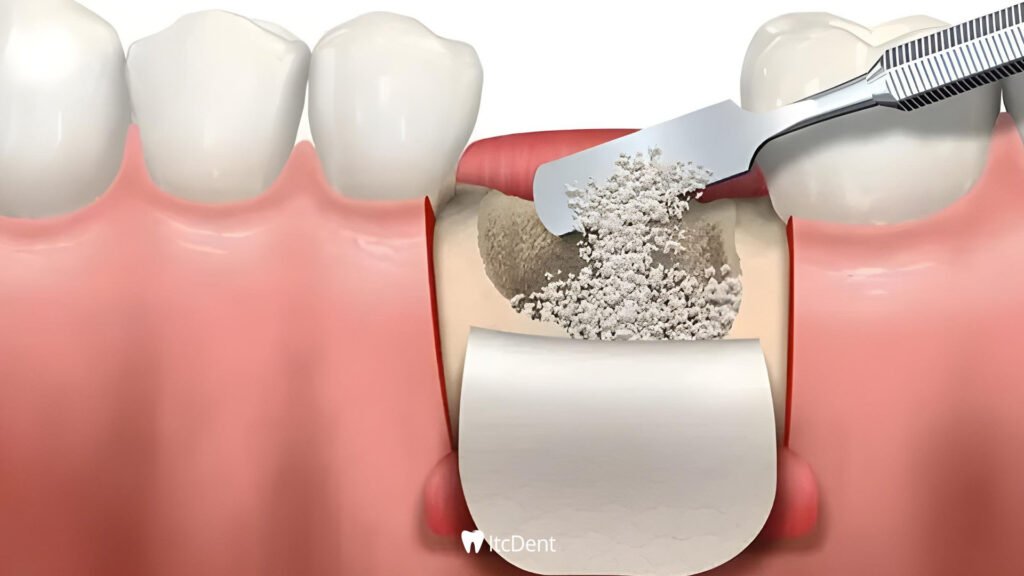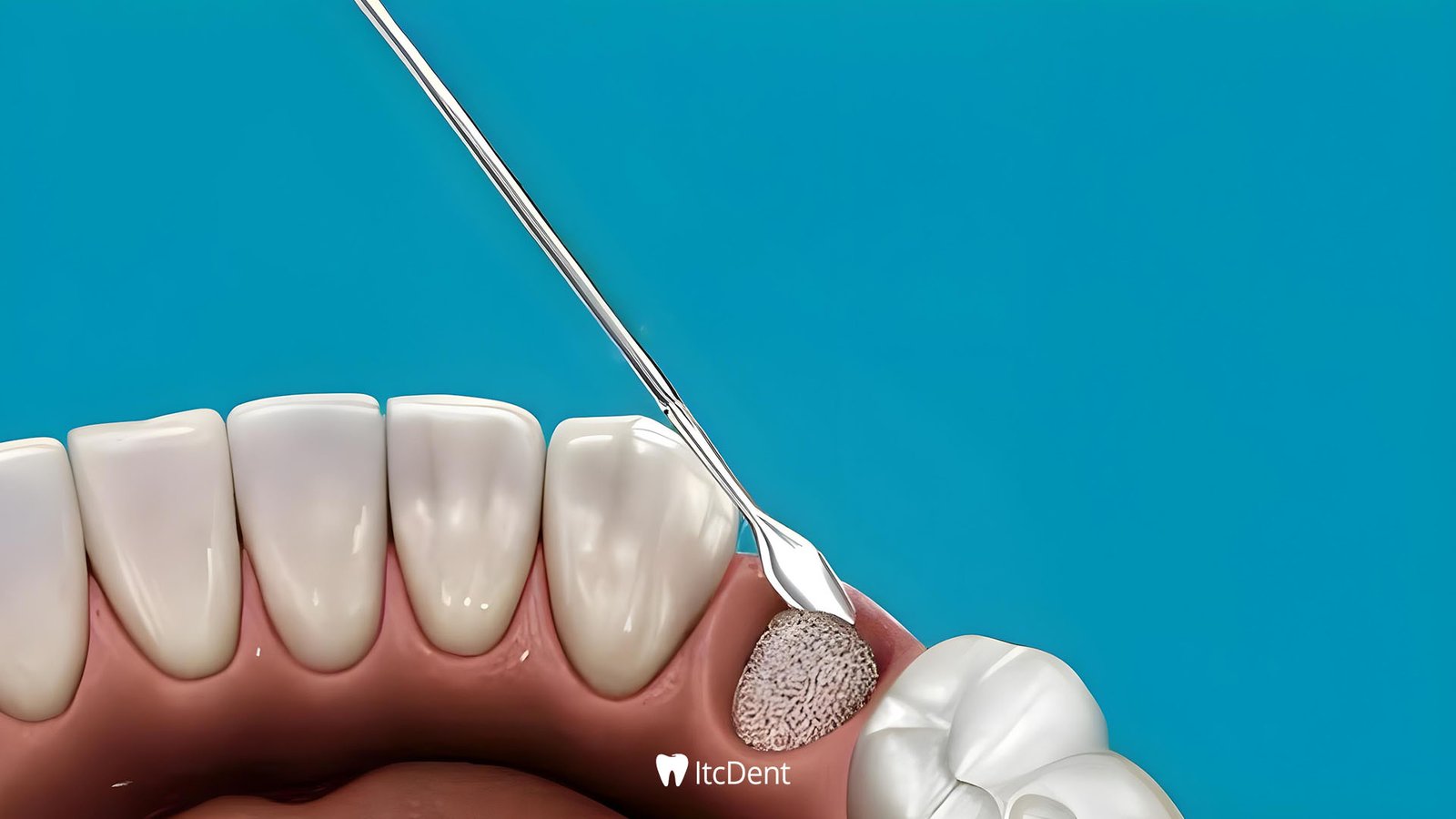Bone Meal Treatment
Dental health is not only an aesthetic issue, but also an important element that affects our general health. However, due to reasons such as tooth loss, gum disease or trauma, the jawbone may melt over time. In this case, bone grafting, commonly known as bone powder, comes into play to replace missing teeth or to strengthen the jawbone. This method, which allows the restoration of bone tissue, is widely preferred, especially to increase the success of implant treatment and to protect the jaw structure.
What is Bone Powder
Dental health is not limited to protecting teeth; the jawbone is also an important part of this whole. Loss of the jawbone can occur for various reasons. Conditions such as gum disease, trauma, cysts or tumors, and long-term tooth loss can cause bone loss.
Bone powder is a special biomaterial used to strengthen and reconstruct lost or missing areas in the jawbone. This material supports the natural regeneration process of the bone, strengthens the jaw structure and creates a solid foundation, especially for treatments such as dental implants. Thanks to this treatment, implants are placed on a more solid foundation, and it is possible to achieve successful results in the long term.

In What Situations Is Bone Powder Used?
It is used in different treatments and to strengthen the jawbone. Here are the most common areas of use:
-Bone Strengthening Before Dental Implants
Dental implants consist of prosthetic teeth made on titanium screws placed in the jawbone. However, a sufficient amount of solid bone is required for the implant to be successful. If the jawbone is insufficient, bone powder is used to strengthen it.
-Protecting the Surrounding Bone After Tooth Extraction
After tooth extraction, the jawbone can melt over time, especially in areas that have been empty for a long time. To prevent this situation, this application can be done immediately after tooth extraction. In this way, a solid bone structure is preserved in case an implant or bridge treatment is needed in the future.
– Bone Regeneration After Periodontal Diseases
Periodontal diseases (advanced gum infections) can cause gum recession and jaw bone loss. When teeth lose their supporting bone, they start to wobble and may fall out over time. Bone powder application recreates the lost bone structure, allowing teeth to be preserved for a longer period of time.
– Sinus Lift Operation
Sinus cavities are located in the posterior region of the upper jaw (where the molars are). If there is insufficient bone in this area, the sinus cavity is lifted up and bone powder is added to the resulting space to increase bone volume. This procedure is necessary for the solid placement of upper jaw implants.
– Bone Tissue Regeneration After Cysts or Tumors
When cysts or tumors formed in the jaw bone are cleaned, large bone gaps may remain. This application fills the gaps and allows the jaw bone to regain its natural structure.
Types of Bone Powder
They are divided into different types according to the source from which they are obtained. Each has its own advantages and areas of use:
- Autogenous Bone Powder: It is bone tissue taken from the patient’s own jawbone or another part of the body. It is the type with the highest compatibility because it is obtained from the body’s own tissue. However, it may not be suitable for every patient because it requires an additional surgical procedure.
- Allogeneic Bone Powder: It is a type of powder obtained from human cadavers and sterilized by undergoing special processes. It is generally well tolerated by the body and is used as an alternative to autogenous bone.
- Xenogeneic Bone Powder: It is bone powder obtained from animal-derived (usually cattle or pig) bones and made biologically compatible with the human body. After being processed, its mineral structure is preserved and it is turned into a material that supports bone regeneration.
- Synthetic Bone Powder: It consists of biocompatible materials produced in a laboratory environment. It usually contains components such as hydroxyapatite and calcium phosphate. It was developed as an alternative to natural powder and consists of biomaterials with a high body acceptance rate.

Advantages of Bone Powder Application
- Increases the Chance of Success of Dental Implants: A solid bone tissue ensures the longevity of implants.
- Prevents Bone Loss: Prevents osteoporosis that may occur after tooth loss.
- Protects Against Gum Disease: Strengthens bone tissue weakened by periodontal diseases.
- Biocompatible Material: Synthetic and natural bone grafts are produced in a way that can be accepted by the body.
Things to Consider
- The Healing Process May Be Long: It may take 3 to 6 months for it to completely turn into bone. Patience should be exercised.
- Infection Risk: Procedures performed in non-sterile conditions may increase the risk of infection.
- Pain and Swelling: There may be mild swelling and pain in the area after the procedure, but this usually passes in a short time.
- Rejection by the Body: While autogenous bone provides the best compatibility, allogeneic or xenogeneic bone grafts can rarely be rejected by the body.

Bone Powder Price
The cost of bone powder application may vary depending on the type of graft used, the area of application and the scope of the treatment. Different procedures such as bone strengthening before dental implants, sinus lifting or periodontal treatments may be effective in pricing. In addition, the experience of the physician, the facilities offered by the clinic and the location of the city are among the factors that determine the cost. You can contact us immediately to get exact price information and learn the most suitable treatment plan for you…


